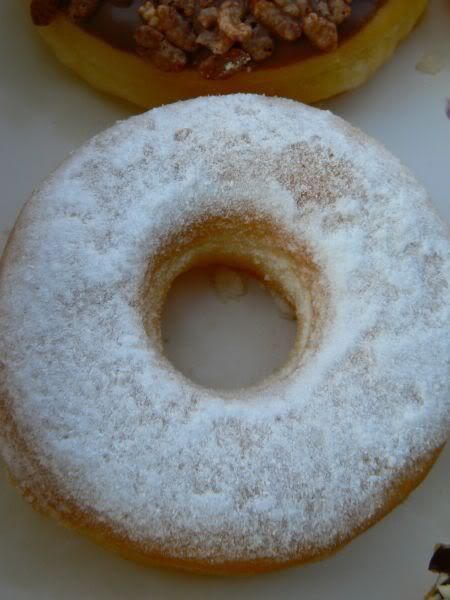Hey can you guys spell doughnut without skipping half the letters?
Anyway, the more pressing question is, is there anything wrong with using a U-wing over a doughnut wing for a bp/w?
I dive a Zeagle Brigade right now and am considering going to a BP/W at some point in the future (still a few months away).
I can easily take the cam bands and the wing off of the Brigade and they are usable for a BP. However are there any major reasons not to do this?
I'm already aware of the benefits of a doughnut wing overall (such as no trapped air, etc), but I'm looking for concerns that are BP specific.
A few *FACTS*
Gas always goes to the high point in any BC or wing. ALWAYS
Now consider a horizontally trimmed diver using any wing. The gas in the wing will be in two bubbles, each running down along side the cylinder.
There will be *NO* gas in the lower arc if the wing is a donut. Why? Because the lower arc is beneath the lower end of the cylinder. The lower arc of a donut wing, for a horizontally trimmed diver is the *LOWEST* part of the wing.
To actually shift gas through the lower arc of a donut wing requires that the lower arc become the high point of the wing, i.e. higher than the gas in the side pontoons.
This requires the diver be about 45 degrees heads down......
When is precision venting most important? During ascents. Do you plan on making butt first ascents on purpose?

The gas in a donut wing doesn't know it's in a donut wing and no longer bound by the laws of physics, in short the gas in a donut wing won't go downhill, under the cylinder and up to the other side.
Other Donut myths:
"Donut wings provide lift at the divers hips"
No, not really, wings provide lift only where there is gas in them. With no gas in the lower arc a donut wing cannot provide lift at the hips. If you need lift at the hips a wing that's wider at the hips is the answer.
"Donut wings allow the gas to circulate"
Gas does not circulate in a wing. You add it when you need more and vent when you need less.
"You can't trap gas on one side of a donut wing to offset the weight of stages"
To move gas from one side of a donut wing to the other requires either raising your shoulder slightly to shift gas in the top arc, or going ~45 degrees heads down to fill the lower arc with gas. Both of these requires intentional changes in trim. Once again the gas in a donut doesn't know it's in a donut wing.
What makes a wing easy to vent or hard to vent is the amount of tank wrap. A wide center panel, oversized wing will have lots of tank wrap. Tank = hotdog, wing = bun.
Lots of wrap means the diver has to break trim in order to move the gas into the top arc.
With a narrow center panel, and proper volume tank wrap is reduced and the diver need not raise their should much to shift gas through the top arc.
Why are there so many over the top near magical claims made for the benefits of donut wings?
I suspect that many have had the experience of using a poorly designed, wide profile, over sized gas trapping horseshoe, and then had the chance to use a dedicated smaller volume single tank wing that happened to be a donut.
The smaller wing was easier to dive, but not because it was a donut.
We offer both horeshoe and donut style wings. All DSS wings feature a 3 inch wide center panel, narrow profile and we can match the capacity to the application.
Have I used both horseshoe and donut wings? Yes as you might imagine designing and testing 16 wing designs involves quite a bit of testing of both types.
Beyond that I can tell you that I have removed the bladders from donut wings, rf welded the bladders shut at the lower arc and reinstalled them into the wing shells.
Test divers could not tell the difference..............
Donut wings aren't evil, there are many fine products to choose from, but they also aren't "magical" instantly transforming any user into a perfect diver.
Tobin





